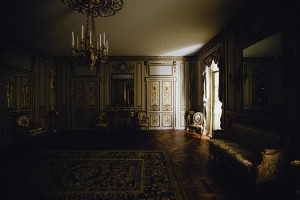How Light Affects Video Recording

Light has tremendous affect on the quality of a video recording or still image. For instance, details and colors of an image get lost when there is too much backlight. However with correct exposure and additional frontal light, details not visible before will emerge out in the same image. A video forensic expert should understand all aspects of lighting and how light affects a still image or video recording. The importance of understanding light allows for better forensic video analysis and applying the right video enhancement techniques. In this post we will briefly explain the different forms and direction from which light can come and how that affects the image quality. We will also explain about Color Temperature and Invisible light.
Forms and Directions of Light
For capturing a good surveillance video recording, it is important to ensure that the target area has a proper source and direction of light. If, however, lighting conditions are not ideal, and there is a video that may be a critical piece of evidence, then using video enhancement services of only the best forensic video experts may be necessary to better see what happened in the video evidence.
Most common sources or forms of light in a scene are:
- Direct Light: Direct light can come from sources such as point source object like sunlight or from small bright object such as a spotlight. Whatever the case might be, direct light creates sharp contrast with highlights and shadow.
- Diffuse Light: Diffuse light can come from sources such as a gray sky, from an illuminated screen, a diffuser, or light bouncing off a ceiling or other surface. With diffuse light, the object from which light comes is typically much larger than the subject. Diffused light, therefore, decreases the contrast. It also negatively affects the brightness and colors. The level of details captured will also reduce.
- Specular Reflection: In Specular Reflection light comes from one direction and bounces in another direction by reflecting from a smooth surface. For example, Specular light is generated when light reflects off water, glass or metal, or a similarly reflective material. This type of light also reduces visibility, but it can be reduced by using a polarizing filter.
Lighting Direction
The Direction from which the light comes can significantly impact the level of details obtained. Main directions from which light can fall on the subject are:
- Front light: Light coming from behind the camera is ideal and will result in proper illumination of the scene.
- Side light: Light falling from the side is good to capture architectural effects but will develop shadows.
- Back light: Backlight is created when light falls directly on the camera lens. Details and colors of the subject will often be lost when capturing images that have a higher amount of backlight.
Color Temperatures in Light
Different types of light have different color temperatures and, therefore, impact the color of an image differently. This temperature is measured in Kelvin (K) and is based on the fact that heated objects radiate this heat. Red has a lower color temperature and is the first visible light that radiates from a heated object. The color turns blue as the temperature increases. So for example, standard light bulbs will often create a brown or yellowish tone in an image. When compared with daylight they have lower color temperature of about 3000 K and will appear more reddish, where the sun is approximately 6500 K. Similarly in an industrial warehouse setting, where long tube fluorescent lights are used to provide unobtrusive light, the images will appear more green and dull in tone.
The human brain can easily cope and adjust how we perceive images from color changes occurring from different kinds of light. Cameras, however, require a special system, called a white balance system, to adapt to different sources of local illumination.
Invisible Light
Colors that fall in between 3,000 to 10,000 Kelvin temperatures are visible to the human eye. However, invisible light wavelength bands are generated by objects that have color temperature above or below these limits. These invisible light wavelengths are either called infrared or ultraviolet. Near infrared light (700 nanometers up to about 1,000 nanometers) can be filtered when a camera utilizes an IR filter. However CCD (charge-coupled device) and CMOS (complementary metal–oxide–semiconductor) cameras are insensitive to UV light. As analog cameras are sensitive to UV light, a UV filter is fitted to an analog camera and used in such situations.